|
Join my Mailing List to keep up to date with my projects. Email Address:
|
A DX, Low Angle Sloping Loop,
or
“Sloop Antenna”
A study of the radiation pattern of a rectangular Small Tuned Loop STL has shown
that a low angle DX Loop is possible.
The experiments came about when I was testing out a new design of portable Small
Tuned Loop Coupler STLC,
Earlier pages on this web site demonstrate how the rectangular STL works and
that it is good for NVIS use and contacts up to 300 and 500 miles are possible.
However DX is only possible under the best conditions, for reliable DX it is
necessary to have low angle radiation where the angle of incidence skywave is
striking the F layer at great distance from you and not up above you. To achieve
this with a Loop it is necessary to form a ¼ wave triangle and erect it so that
the capacitor is opposite to the sloping side of the triangle see the drawings.
The current in the loop is at the centre of the wire forming the loop. This is
why the capacitor is placed at the bottom in the rectangular loop, it can be
seen in the drawings that with the Sloping Loop there is a longer section of
wire to radiate the skywave in the direction of the arrow. The voltage in the
loop is at points C, E, and the current is centred around the centre of A,B, at
the arrow.
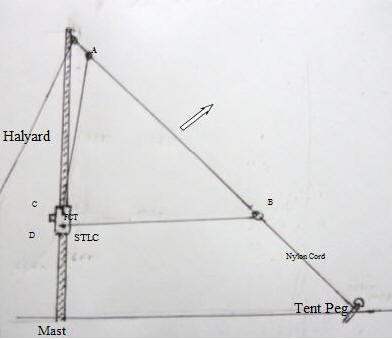
The Drawings show a Small Tuned Loop “STL” that is triangular in shape. Because
the centre of the sloping side A B is opposite to the tuning capacitor the
incidence of radiation is at a low angel.
Whereas a rectangular loop radiates in a vertical direction which favours near
vertical incidence skywave “NVIS” this is because the current portion is at the
top opposite to the Capacitor.
The Sloop was originally designed as a portable loop for DX work on high ground
but it has performed very well at home. I put one up for 80 and a second one for
40 meter they have the advantage that the Incidence of Skywave can be varied by
simply moving the position of the stay that holds the Loop corner “A” out at an
angle. When the ground peg is in close it gives the low angle and farther away
gives the high angle. Note the Small Tuned Loop Coupler STLC can be attached to
the pole or pulled up the mast with nylon cord.

The portable version was tuned with the small tuned loop coupler STLC that was designed specifically for portable or mobile use. I am not at present publishing the details of the STLC as I hope to find someone to take up the idea and produce them for sale. (If you are interested in taking up production and marketing of the Sloop and new Tuner please email me). However the methods described elsewhere on this web site will be suitable for use with the Sloop if you wish to make one for your own use.
Pictures of the new prototype 100 watt STLC.
Showing three models
1/, The tuner at the back of picture has hooks to hang below skylight in mobile station.
2/. The tuner on left of the picture can be fastened to a pole with rubber bands etc.
3/. The tuner on right of the picture that has a meter to indicate tuning of the loop.
The coax connection and transformer switch are visible at the ends.
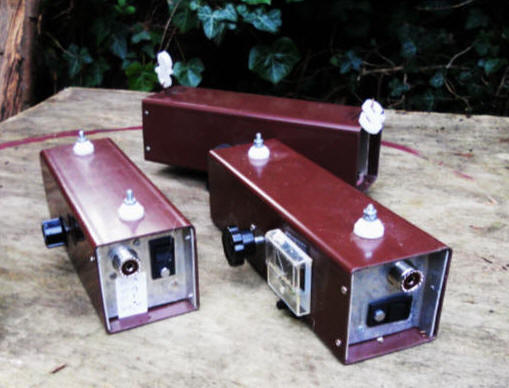
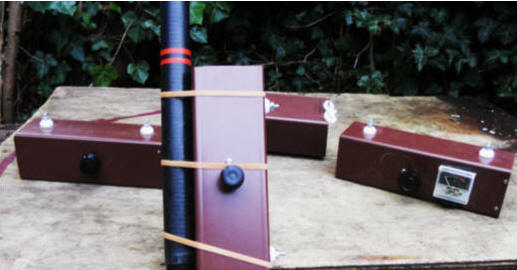
The prototype tuner can be fastened to a fishing pole with elastic band etc for
portable use.
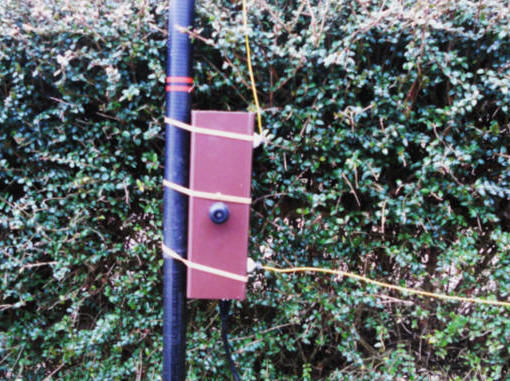
Below is an example using a vacuum variable capacitor and motor mounted in a
plastic container. The mast is metal so the tuner is pulled away from the mast
to reduce interaction and damping of the loop.
If you have a metal mast the Tuner can be pulled away from the mast. With a wood
or fibreglass pole it can be left to hang close to the mast or attached
whichever is most convenient.
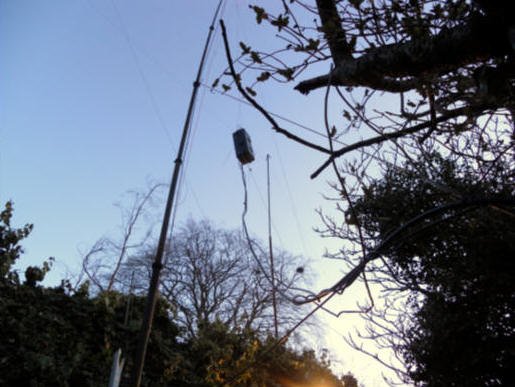
I am currently experimenting with small model 2 meter loops to demonstrated the
radiation direction of the STL I will be publishing them shortly. If you would
like to go on to my mailing list for updates please complete the form on the
left.